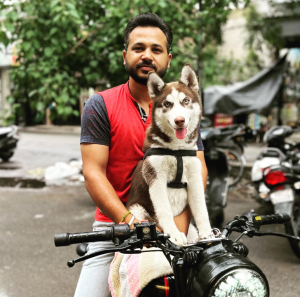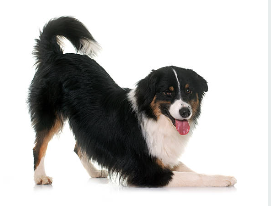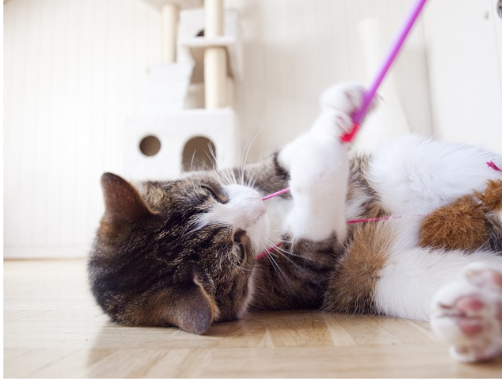Dog Bike Riding Training: How to Teach Your Dog to Ride Alongside Your Bike
A fun and healthy way to enjoy the outdoors with your dog is to go on a bike ride. Consider a scenario where you cannot keep up with your dog on foot because he has far more energy than you do. Your dog may get the exercise he needs by learning to run with you when you bike, or you may use this as an opportunity to spend quality time with your dog by letting him ride in a carrier or trailer. Seeing other dogs and riders accomplish it makes it appear so simple. It takes some careful planning, preparation, and equipment selection to bring your dog along on bike outings so that everyone is safe. Also, it’s an excellent method to strengthen your bond with your animal companion. You must first train your dog how to properly ride beside you on your bike before you can head out onto the trails.
Setting Out Tasks
Biking with their dogs on leashes and letting them run alongside the rider is a popular activity for dog owners and their canines. It would help if you first decided whether it is okay for your dog to run along your bike before you can teach it to do so. Because an accident or entanglement with the bike could result in severe or fatal injuries, it may be too risky for your tiny dog to run alongside a bike. For medium to large dogs weighing 25 pounds or more, training your dog to run alongside a bike is usually advised. Be sure your dog is physically capable of running alongside your bike before you teach them to do so. Older dogs or dogs with orthopedic or other medical conditions may find this activity too taxing, and young puppies who are still developing may find it too demanding on their developing muscles, bones, and joints. To be sure your dog is in good enough physical shape to ride a bike, consult your veterinarian.
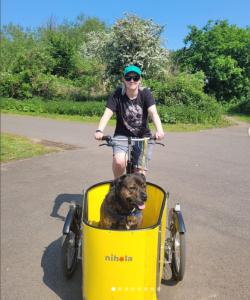
Dogs who are too tiny to run alongside you on your bike can ride with you in a basket or other specialized pet carrier. A bike trailer, like the ones used for kids, is a terrific option if your dog is too big or is not physically able to run with you, such as an older dog with orthopedic difficulties.
Even with a healthy, fit dog, you must supervise the exercise to ensure you are not pushing your dog beyond their physical limits if you are training them to run alongside the bike. Encouraging dogs to run alongside their owners’ bikes is an everyday activity, but teaching them to do so in a regulated manner might provide challenges. Your dog should not run off and run you over, nor should it interfere with your bike’s wheels. You must train your dog not to tug on you or the bike and teach them proper stance when they run on a leash next to your bike.
How to Bike with Dogs Safely
Safety gear for both you and your dog is necessary to train them to run beside your bike. Along with making sure your dog is psychologically and physically up to the task, you will need the required equipment. Teaching your dog to accompany you on bike rides should occur after they have been trained to respond to spoken directions. This is because a dog not prepared to obey can sustain catastrophic injuries. To ensure your dog does not become entangled in unnecessary equipment, you will need a bike that is in good working order and has no loose parts or extras that protrude, like spokes or foot pegs. For optimal traction, especially while riding off-road, a bike with wide, knobby tires is advised. To protect their heads, riders should wear helmets, and wearing colorful clothing will make them more noticeable to oncoming vehicles.
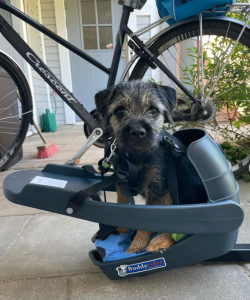
To lessen the possibility of your dog pulling when you are biking, specialized commercial leashes are offered. It’s advised to use a specific dog leash for riding bikes with your dog to lessen the impact of a deviant dog and maintain a safe distance between them and your bike! Also, if an accident does happen, your dog will be less likely to sustain injuries if you use a harness rather than a neck collar. To increase your dog’s visibility to oncoming traffic and other bikers, ensure he has an identification tag in case he gets lost. You may also get fluorescent vests for dogs.
The best area to begin training is somewhere calm, without distractions like dogs or other riders and any traffic. It could take many days of brief lessons to teach your dog to ride in a basket or trailer or to sprint beside you while you’re cycling. It is necessary to have a dog-safe basket or trailer that can accommodate basket leashes to keep your dog safely inside the carrier while they are learning to travel with you if you are training them to ride in a carrier or bike trailer. It may take several journeys, gradually building up experience, to teach them to react and run or ride beside your bike securely in increasingly distracting situations. When going on bike rides, remember to pack water for your dog!
